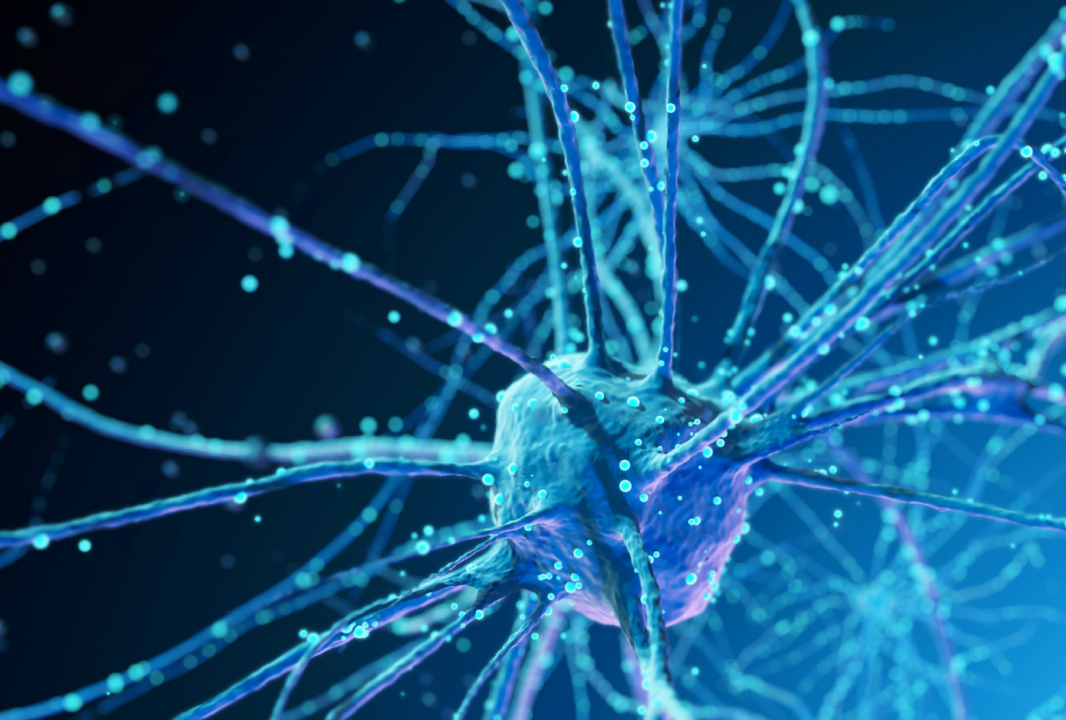Authored by Cello Health, now part of Lumanity
| There are more than 55 million people living with dementia globally, with another 10 million new cases occurring every year. Dementia has significant physical, psychological, social and economic impacts – not only for people living with the disease, but for their carers, families and society as a whole. While there are many forms of dementia, Alzheimer’s disease is the most common and is believed to contribute to 60–70% of cases, with patients typically living ~8–10 years on from diagnosis. Now, after a prolonged period of time without any new drug launches in the space, and alongside a number of high-profile clinical trial failures, there are a growing number of therapies on the horizon to treat dementia. With this in mind, we caught up with Dr. Michael Ashby at the University of Bristol to discuss current challenges and future opportunities in dementia treatment and R&D. |
How would you describe the limitations of current dementia and Alzheimer’s treatments available to patients?
The fundamental limitation of all the treatments that we have for Alzheimer’s disease is that none of them halt progression of the disease. The treatments that we do have will, in some patients, slow down the progression of their deterioration into worse symptoms of Alzheimer’s.
The standard treatments are acetylcholinesterase inhibitors. Licensed in the UK, there’s also a partial NMDA receptor – a glutamate receptor antagonist – this is a different mechanism of action and is prescribed to some Alzheimer’s patients at specific stages of the disease.
In the USA, we now have Biogen’s Aduhelm, an antibody-based treatment that targets the amyloid pathology, one of the key pathologies that defines Alzheimer’s disease.
How much is understood about what triggers the underlying pathology for Alzheimer’s?
It’s not entirely certain what triggers the underlying pathology. Alzheimer’s disease is a long lasting, slowly progressing disease. It’s thought that one of the key aspects of it, is that when patients first present with symptoms, typically related to short-term memory, current understanding suggests that they may have been experiencing a build-up of pathology in their brain for some years beforehand. So, the initial triggers of the disease may have started a long time earlier before clear and serious symptoms begin to manifest.
There’s an ‘amyloid burden’ in patients’ brains, and the current thinking is that this amyloid protein is building up in those pre-symptomatic years. There’s a significant hypothesis that amyloid build up could be that trigger which then goes on to trigger a further disruptive cascade in brain, particularly those related to the protein tau, which also presents as a common pathology in Alzheimer’s brains.
Do you see a better future for early Alzheimer’s diagnosis – before the obvious symptoms present?
Biomarkers are starting to be established in pre-symptomatic patients. Largely that’s been done in a small cohort of patients which have inherited forms of Alzheimer’s disease. About 5% of Alzheimer’s patients have an inherited mutation form called ‘early onset’ Alzheimer’s disease which tends to come on strong and early. They have been recruited into biomarker testing trials early, to establish whether there are biomarkers that are indicative of them developing Alzheimer’s later using brain scanning techniques to image the levels of amyloid.
There are also markers of tau which can be used in these brain scanning techniques. This can then give an indication of the amount of buildup of tau (or amyloid) in the brain – potentially in pre-symptomatic patients. The challenge with scanning patients’ brains is that it’s difficult, time consuming and costly. For this reason, some research has been looking for alternative biomarker-type routes that may give an indication of a trajectory towards Alzheimer’s disease. For example, tests which might relate to blood sampling for aberrant forms of tau or signatures of amyloid in the blood. I think however that it’s going to be very difficult to establish a definitive biomarker which will guarantee you’re likely to develop Alzheimer’s, because there are many factors which might influence your progression.
What are the other challenges in dementia and Alzheimer’s that are barriers to bringing new therapies to market?
A fundamental issue is understanding the brain pathology that triggers the neurodegenerative process. Something that’s been known for a long time with Alzheimer’s patients, from post-mortem histology, is that there’s a large neuroinflammatory response in the brain. It’s becoming more heavily acknowledged however, that this inflammatory response, may be part of the pathological process itself – that overactivation, or perhaps uncoordinated activation of the internal immune system within the brain, particularly microglial cells, may be causing a problem. There’s current research into novel therapeutic strategies which might be different from the classic pathologies that we associate with Alzheimer’s such as amyloid and tau.
Could you envisage for example, an immunological treatment early in the disease and something more targeted in later stages?
If you’re going to target the immune system, it’s still not clear precisely when you would want to do that. There are of course caveats too, because your immune system is doing an important job in your brain as well as the rest of the body, but yes, I could imagine there could be a combination of immunological and anti-amyloid treatment. Amyloid is clearly going up in the brains of Alzheimer’s patients. There’s still debate about whether it’s a causal factor, but it’s likely to be a risk factor for developing disease.
Lowering amyloid is in fact the basis of why Aduhelm was granted its licence in the US. Though there’s much debate about whether that impacts disease deterioration in terms of symptoms dramatically. It’s possible in the future, however, that you’d target amyloid at one point of the disease – then you incorporate an immunomodulator of some kind. And perhaps you’d be looking at anti-aberrant tau therapy later, as the pathology worsens.
What are the challenges associated with animal model research and going into human trials in this field?
Historically, a lot of preclinical work on Alzheimer’s has been done in mouse models, and there are hundreds of different models of Alzheimer’s disease or neurodegenerative dementia in mice which are largely created from genetic mutations associated with Early-Onset Alzheimer’s Disease. Mutated versions of those inherited genes – sometimes human genes, sometimes mutated mouse genes – have been put into experimental mice. Those mice all have slight differences, but, for example, if you take a mutation which is related to the amyloid pathway, those mice will develop amyloid pathology, and some of them in some cases will develop neuropathology in a similar way to what you might see in the human brain.
Drugs which seem to work very well in some mice, for example the anti-amyloid drugs which will lower amyloid levels, also tend to improve cognitive deterioration in mice. So, they give a good hint that they should work to stop the disease. However, when they’ve got into patients, they’ve mostly been much less successful. Part of the reason is that no mouse model can replicate the time course of the human disease. The human disease is typically lasting at least 10 years, maybe 20, and a typical lab mouse lives for two years. It’s therefore not clear if those mice are reaching a stage which is equivalent to the human disease, or at least what stage of human disease they are modelling.
When you’re going to human trials, one of the challenges is that one would tend to recruit patients who have the disease and may already be at a late stage. A treatment which worked effectively in a lab study that was modelling early stages of disease may not be going to work for this patient group as the intervention is potentially too late. Participants need to be recruited earlier and some trials have tried to do that by targeting patients in the early stages of Alzheimer’s or those with a condition called Mild Cognitive Impairment, which precedes Alzheimer’s in some patients. However, really we need some reliable pre-symptomatic measure to show that they might go on to get Alzheimer’s disease.
There are also new experimental models being looked at. For example, growing human cells into cerebral organoids in culture. These have the advantage of being human cells, but ultimately, they’re in a culture dish, so they can’t fully replicate the anatomy and physiology of the brain.
Aduhelm is now approved in the US but it was a lengthy process with the FDA. What do you think about the approval process in general and related to this field?
I think it’s safe to say that the Aduhelm FDA approval process was unusual and has caused much debate within the Alzheimer’s research community. Nearly all therapies which are approved by the FDA must prove that they impact the primary symptomatic features of the disease. Aduhelm was approved by a different route as it doesn’t necessarily impact on the cognitive domain, which are the core symptoms of Alzheimer’s disease. In essence, it has been approved on the basis that it affects a biomarker of the disease – reducing the amyloid levels in patients’ brains. Conversely, the EMA have taken a more conservative view of Aduhelm and have actually rejected it based on this – but it is believed that Biogen are aiming to appeal this decision.
There was some ambiguity around one of the late-stage trials, in that there didn’t seem to be much cognitive benefit (although the amyloid levels were reduced). There were also some signs of cognitive benefit in a particular group of patients which had a high dose. Another unusual thing with the FDA approval, is that it doesn’t specify a particular group of Alzheimer’s patients, so in theory it could be prescribed to any anyone at any stage. However, the Aduhelm trials recruited patients in early stages of Alzheimer’s. That means that there’s relatively little guidance for clinicians on who would benefit most from Aduhelm. The FDA has made a prerequisite that further trials will continue, to test its efficacy in the real world. I can understand why because you need to study efficacy over a long time.
The process with Aduhelm potentially may set a precedent for therapies which show efficacy on a biomarker, but not necessarily clinical efficacy. I’m sure that we will see further amyloid drugs, which are perhaps more effective at reducing amyloid or maybe more targeted to specific patient groups. I think it might now be difficult for the FDA to refuse permission for a drug which met the same criteria as Aduhelm did – even though we might not know if it’s clinically effective for some years.
What more can pharma companies do in the field of dementia and Alzheimer’s to support commercialization from preclinical studies?
In the past, several big pharma companies have invested heavily in Alzheimer’s and dementia related pipelines. More recently however, big pharma companies have backed away due to high-profile late-stage failures. I would now expect that more preclinical work will go into smaller biotechs and there will be increased collaboration and partnerships with academic labs. Pharma too may seek to create partnerships with smaller teams who are more focused on specific aspects of research and overall, this field will see a switch away from being wedded to a particular model.
From my point of view, there is no single model that is close enough to the disease to be totally predictive, so you need to test potential therapies from different angles at early stages in their development. For example, if you’re working on tau biology as we are, it is likely that you require a different set of expertise and focus to those working with the neuro-immune system. In summary, I would expect to see smaller teams bringing their discoveries forward for partnerships with smaller biotech companies, which are then potentially fed into a larger pipeline for big pharma.
How do you think that preclinical research can be improved?
Better preclinical models would make a big difference and there are a couple of ways of thinking about that. One of the main ones is incorporating some of the now known genetic variants in patients, or genetic risk factors into our models. For example, traditional dementia mouse models tend to take a mutated human gene, let it express and try and force that pathology to go fast enough so that you can study it. The latest models are taking a more nuanced approach in terms of expression levels and the gene variants that are studied. However, there’s unlikely to be a model that can cover the whole disease – you need to have coordination between different groups looking at different models to get fuller insight. We need to prioritize synergizing our models rather than putting them against each other.
Has there been significant progression in understanding risk factors for the development of dementia and Alzheimer’s?
There’s been a big change in our understanding of how genetics might impact Alzheimer’s disease – aside from these genetically inherited forms of Alzheimer’s. For example, if you have a variant of a particular gene called APOE and you have a high expression of the APOE4 isoform rather than one of the other isoforms, then you have a highly elevated risk of getting Alzheimer’s disease. That understanding
of the genetics can potentially give you an idea of risk factors for individual people.
Much of our understanding of the immune system in Alzheimer’s came from some of these risk genes because several of the ones that are stand out risk genes, seem to be related to non-neuronal response in the brain. For example, rare variants of a gene called TREM2, which is expressed primarily in non-neuronal cells, is a risk factor. So perhaps some of those immune response genes point towards the idea that we should target the immune system in the brain to open new therapeutic avenues. From a patient point of view, that’s not so clear because none of the genetics are causal. Perhaps in the future, a combination of therapy which targets a particular pathway might be linked to your personal genetic makeup to target your therapy appropriately, or at least put you on the radar of your doctor knowing that you’ve got potential risks of that pathology. Of course, there are serious ethical considerations we must address before implementing this type of strategy.
What do you think are going to be some major milestones or pivotal points in your field over the next 5–10 years?
New angles of therapies, outside of those targeting amyloid, coming through into clinical trials will be an important phase of Alzheimer’s drug discovery, as all anti-amyloid drugs (except Aduhelm in the US) have failed to be licensed in the past 20 years. However, you need to be able to test those therapies and that’s a major challenge.
I suspect that we will have better diagnostic tools, or at least biomarker tools to allow us to access patients who are at risk of Alzheimer’s disease but don’t yet have the clinical status – that’s really key because we know it starts many years before patients present with classical symptoms. This earlier diagnosis is critical to stop the disease, rather than try and recover it because once cells start dying in the brain, it’s very difficult to do anything about it. The brain doesn’t renew itself like most other organs, the neurons that you are born with are largely the ones that you have at the end of your life. Therefore, to effectively stop Alzheimer’s, we ideally need to intervene before neurons start to die.

| Dr. Michael Ashby leads a research group within the School of Physiology, Pharmacology and Neuroscience at the University of Bristol. The group’s research focuses on how neurons interact with each other to support brain function, and how, when those neurons don’t interact properly it causes problems with brain function, such as in a degenerative disease like dementia and Alzheimer’s disease. |
Despite the approval of Aduhelm in the US, there remains a significant unmet need in the treatment of dementia. Looking forwards, it is evident that there are a number of emerging opportunities to improve patient outcomes in this area:
First and foremost, early and reliable diagnosis of dementia will be key to improving treatment outcomes, either via blood or imaging diagnostic markers, or perhaps via novel behavior tracking through our smartphones.
Secondarily, the use of a combination of therapies to target different aspects of dementia pathology at distinct stages of the disease will likely be required (e.g. an immunomodulator and an anti-amyloid therapy).
Finally, it is clear that new experimental models will be required to further push the envelope on dementia research, given many animal models currently in use fail to mimic the true nature of the human disease – with novel organ culture models seen as a promising potential avenue for this.
| Interview led by Andreas Wersäll PhD, Senior Consultant |











